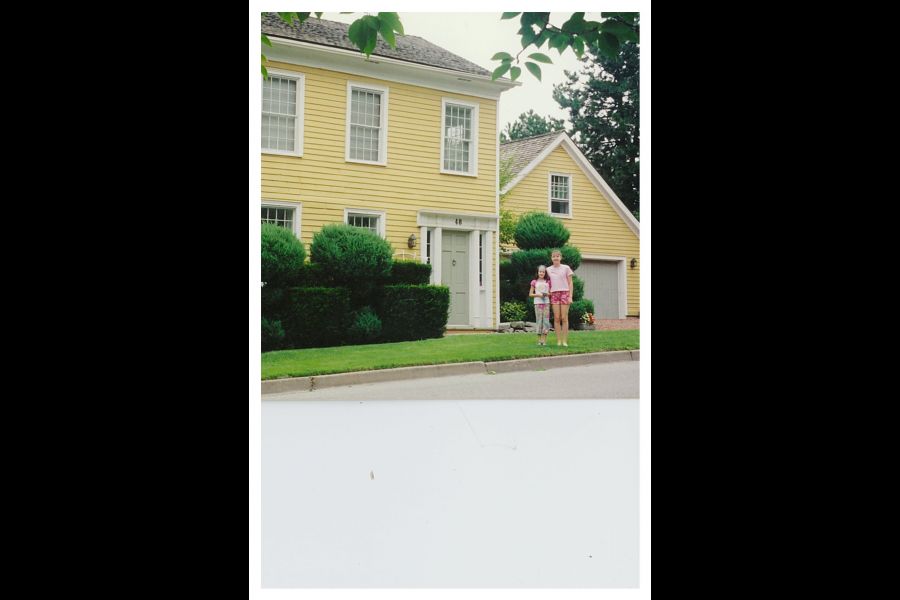The town of Niagara-on-the-Lake is awash in new housing developments. Old Town, Virgil, Glendale and St. Davids all have newly created subdivisions. Even Queenston is witnessing the building of new homes. But an older and very interesting housing stock still exists.
Queenston is home to several historically designated buildings, including Willowbank. One of the village’s more modest homes celebrates its 200th birthday in 2020. It was one of the first five privately owned properties in Niagara-on-the-Lake to be designated as having historical value. Indeed, it even has its own bylaw.
A fragment of a mortgage document indicates that there was a building on the site occupied by the house as early as 1803. Unfortunately, further information relating to Queenston was kept at the Court House in Niagara-on-the-Lake and was destroyed along with much of the town during the fire of 1813.
The present structure on Queenston Street was known to be built for John Johnson Brown in 1820. The house was described as a “two-storey, four-bay house of rectangular plan with a longitudinal gable roof and two chimneys in the body. To the east is an ‘ell’ whose lean-to shed roof continues the pitch of the gable roof. It is clapboard framed on a rubble foundation. The main entrance is in the southernmost bay. It has a ‘saltbox’ shape associated with New England. There is a low basement under the west part of the house only. A fireplace foundation is next to the north wall.”
Inside, there were a few features worth noting. In the bedroom, the original wooden mouldings remain underneath each window. They are described as “diamond fielded panels connected by chair rails.” These mouldings were copied during a recent renovation in the living room.
The house was purchased for 250 pounds by Brown from Thomas Helmer, a United Empire Loyalist who fought in the American Revolutionary War. There was no formal documentation of ownership until 1848 when Brown’s widow wanted to sell the property. Among the signatures on the land transfer deed are those of a Vrooman, a Secord and a Hamilton. Mrs. Brown sold the house to a member of the Wray family. Other early owners were Gorings, Robertsons, even a Lailey.
In its early days, this building was not just a family home.
By 1850, rules for the inspection and licensing of hotels were passed. The owners of such enterprises “must provide a comfortable dwelling with not less than four rooms (lounge, parlour etc.) other than the bar or kitchen and not less than four beds other than those necessary for the use of the family, also a good shed open to the road with enough room for six horses; that said he, she or they is a person or persons of sober habits and good moral character, a subject or subjects of Her Majesty by birth or naturalization.”
There were also limits on the number of hotels. Queenston could have six hotels, St. Davids two and the road between Queenston and Niagara-on-the-Lake was allowed just one. This being said, there are records of 13 taverns in Queenston.
According to former village historian Rosanne Fedorkow, by the late-20th century, there were only two former inns still standing. One, originally called the Riverview Hotel, is now the South Landing Inn, and the other is the Brown House.
The evidence of the house’s earlier incarnation is still visible. The architectural description of the door being in the south bay of the house is the first clue. At the time the house was built, the Georgian/Palladian style was the more popular style. By placing the door at one end of the house rather than in the middle, a large room could be set aside as a lounge or parlour. The bar could be located close by in one of the warren of rooms in the previously described lean-to.
The rules stated there must be room for four beds – not four bedrooms. The room above the parlour is large enough to accommodate at least four people. Both the parlour and the bedroom have large fireplaces built on the foundation in the basement that would have kept the customers warm. Finally, there is evidence that a stable block was situated close to the house on the south side.
As time passed, the house became something of a wreck. It ceased to be occupied by its owners. At one stage, it became a boarding house, with the large parlour and upstairs room divided into smaller ones.
By the mid-20th century, the house had fallen into even further disrepair. It was saved by a group of local residents who had created a company called Quatre Tech. The group also helped to preserve the former Baptist Church, which now serves Queenston as a community centre.
The rescue took place in the mid-1970s and by 1979 it received its historical designation. The present owners act as caretakers, but caretaking has led to a number of issues.
A good example of this was the discussion with the local historical committee about the chair rails. They were deemed to be original. In the 19th and early 20th century, they had been painted with lead paint. The remediation process was lengthy and expensive. If all of the layers of paint were removed, there would be next to no wood left. In the end, they were replaced.
The windows proved to be another issue. In 1984, in order to receive a grant to replace them, there were a number of restrictions. “Grants may be applied to the repair, conservation, or reconstruction of wooden storm or screen windows if the historical evidence of the use of storm windows is documented. The storm or screen windows must be a replica of the original in both style and material.” Storm windows using materials such as plexiglass or aluminum could not be used as replacements.
The owners at the time chose to replace the older windows and fix them so that they didn’t open. With windows on every side of the house, this meant that air conditioning became a necessity in the summer. The present owners had the windows opened, and storms and screens added. Because they were unable to use modern materials and methods, it means that heating bills can add up.
In spite of the restrictions, the house remains a charming, rambling property. It is old, and in need of constant work to maintain it for 21st-century occupants; however, there’s no question it’s worth the effort. Future generations are bound to love it.
More Niagara’s History Unveiled articles about the past of Niagara-on-the-Lake are available at:
www.niagaranow.com











